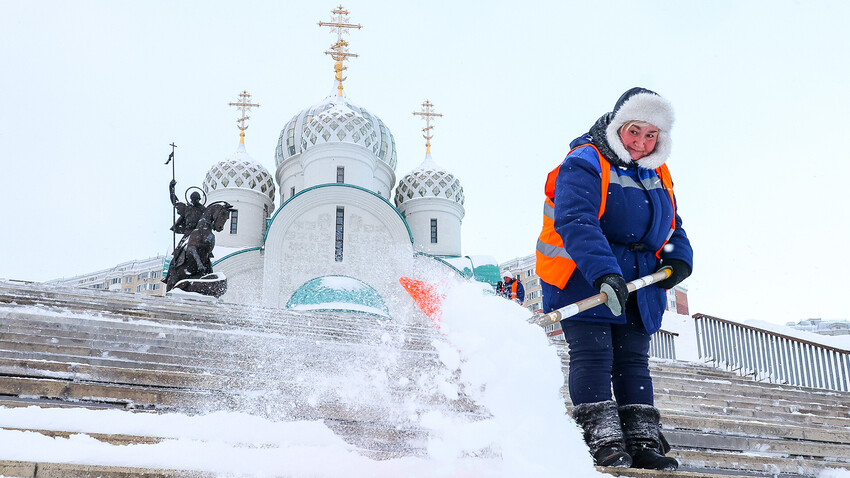
Over 150,000 people and 14,000 pieces of equipment were needed to clear Moscow of the consequences of snowfalls in January, according to the Moscow Municipal Services Complex. Sidewalks, roads and the roofs of buildings all had to be cleared of snow almost daily. But, what happens to the snow removed from the streets?

Loads of snow in Moscow this winter
Vitaly Belousov/SputnikThe traditional disposal method is to take it to a snow dump outside the city, a large holding area where it is deposited and stored and where it melts when the weather becomes warmer. Such places are deliberately located away from the city in order not to create problems for residents. The disadvantage of this method is that the snow has to be transported by truck across the whole of the city, significantly contributing to road traffic. What is more, it is expensive because of the cost of the specialized equipment involved and the drivers' time. For this reason, snow-melting equipment is increasingly being used in the interests of snow collection in the country's largest cities such as Moscow, St. Petersburg and Kazan more efficient.

Removing snow from the streets of Moscow
Alexei Nikolsky/SputnikThese are basically large installations that first filter any trash out of the transported snow and then treat it with warm water and filter it into the drainage system. The whole process is very quick - in just 3-4 minutes, the installations can melt up to 10 tons of transported snow.
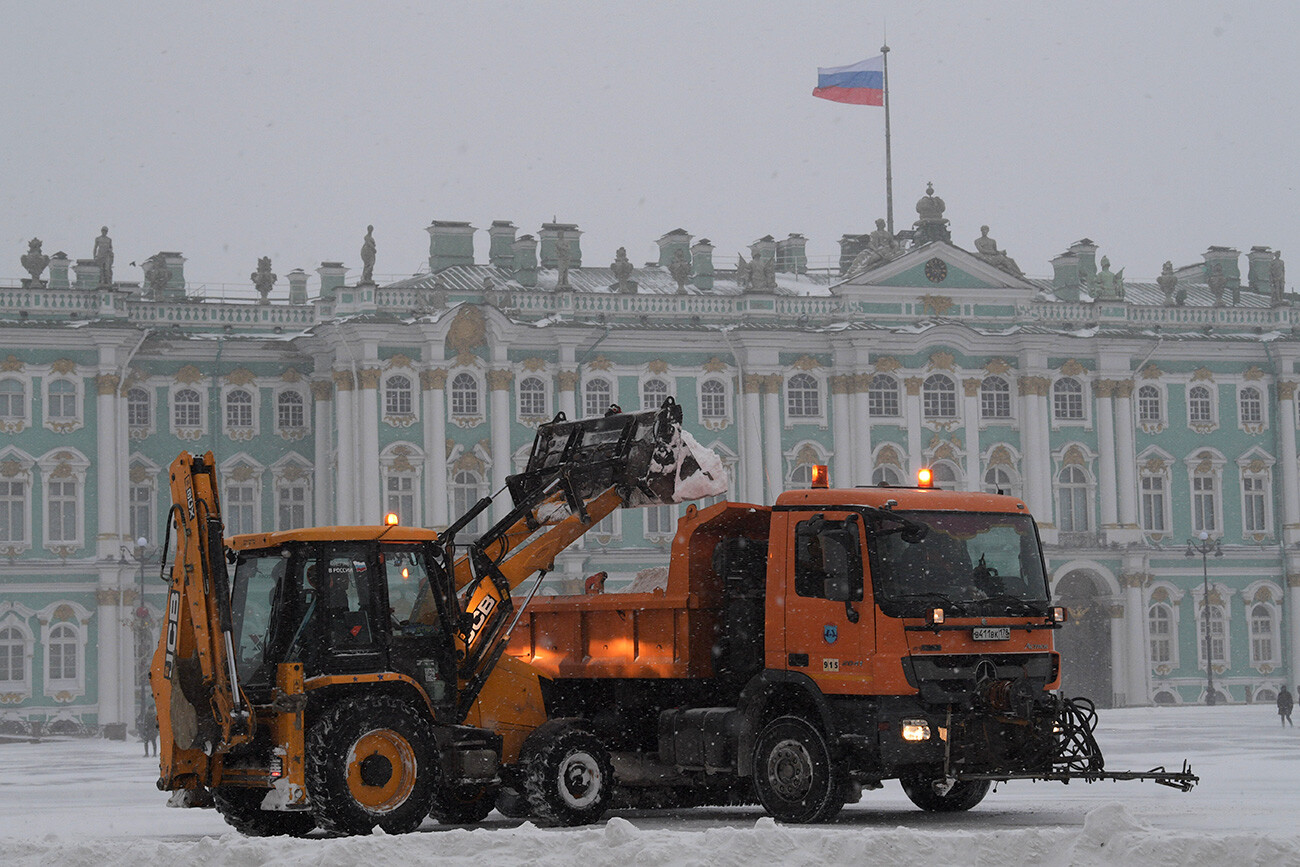
Snowstorm in St. Petersburg
Alexander GalperinThe snow-melting stations save time and money on snow clearance, but cost a lot: 1-5 million rubles (approx. $11,000-55,000). The price depends on their operating speed and the maximum load capacity. In Moscow, 49 such installations were setup within the city limits, while St. Petersburg has 18.
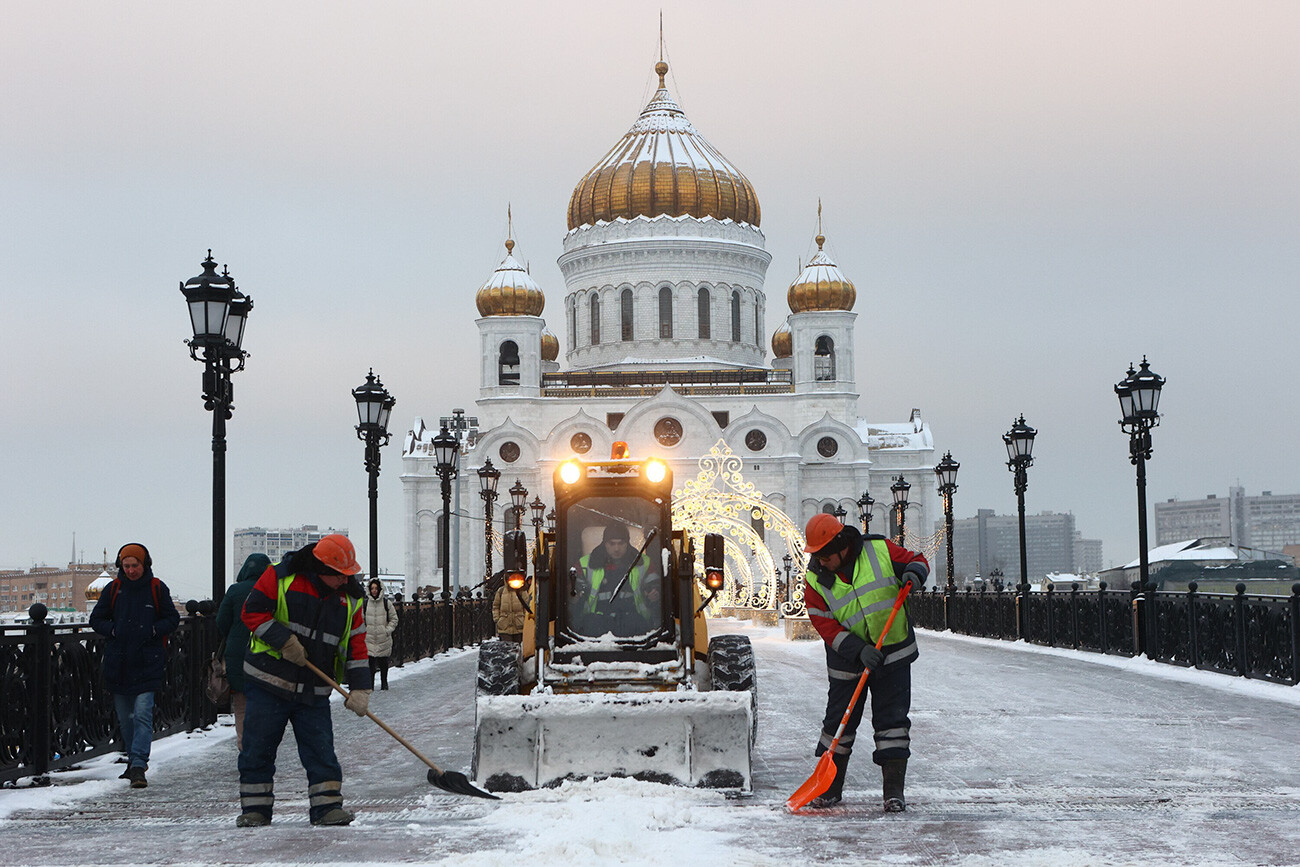
Removing snow from the Patriarch bridge in Moscow
Yaroslav Chingaev/Moskva agencyAn additional consideration is that snow tends to absorb harmful substances from the atmosphere: for instance, vehicle exhaust pollution. As it melts, the snow can contaminate the soil and bodies of water with heavy metals and even petrochemicals. The snow-melting points, which are fitted with a full purification cycle, allow these adverse impacts to be avoided - which is of undoubted benefit to the city environment.
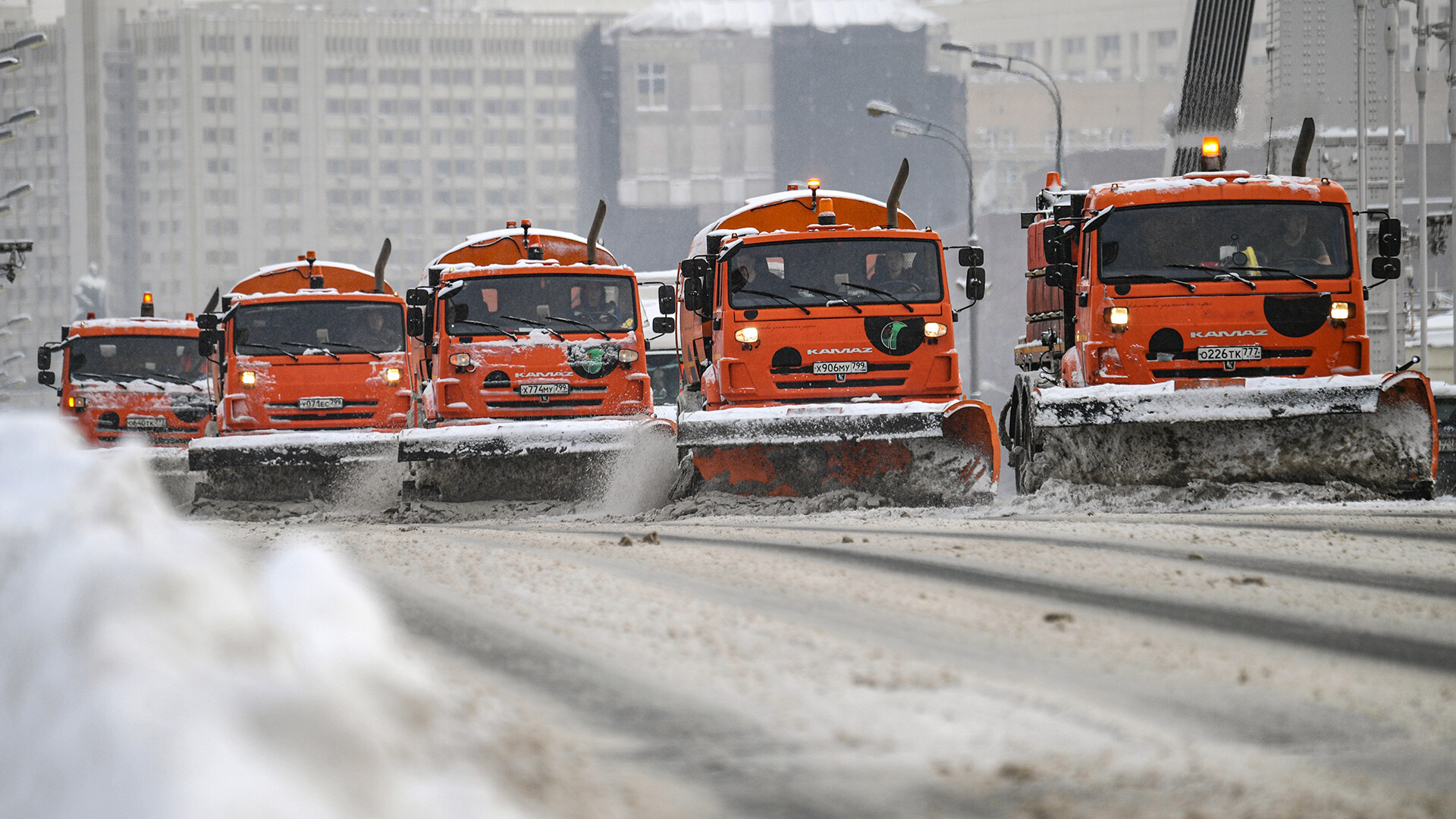
Snow removal equipment in Moscow
Alexei Nikolsky/Sputnik"These days, all this mass of removed snow undergoes a full cleaning cycle at purification facilities and is drained into the Gulf of Finland as clean water," according to Vladislav Ponomaryov, the head of the press service of the St. Petersburg Water Canal state unitary enterprise, the body responsible for the operation of the snow-melting stations.
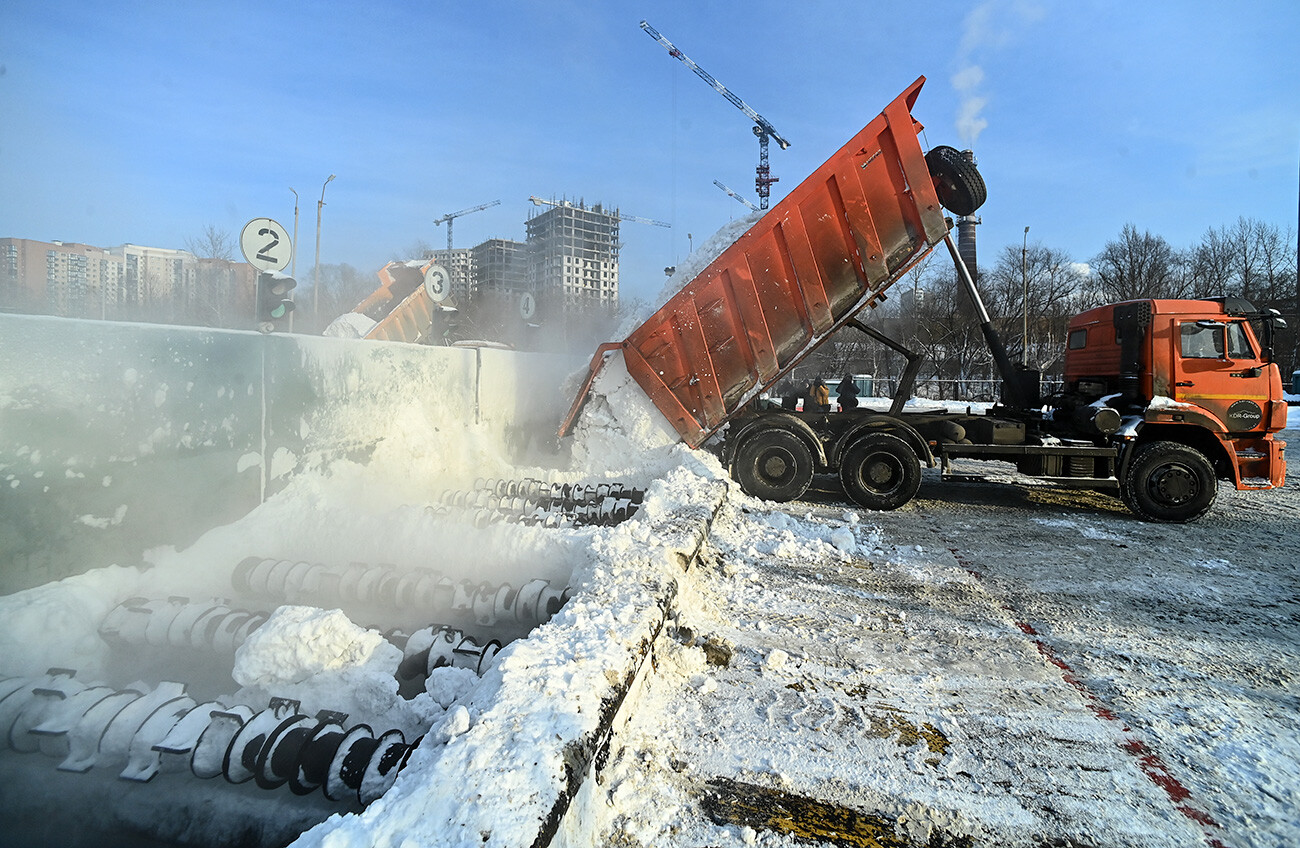
A A snow-melting station in Moscow
Yevgeny Odinokov/SputnikIn St. Petersburg and Moscow in recent years, the two methods of snow collection have started to be combined - small dump sites have started to be set up alongside snow-melting equipment. In bad weather, the aftermath of snowfalls is brought there from neighboring areas of the city, in order to clear the streets promptly and avoid wasting time on transportation.
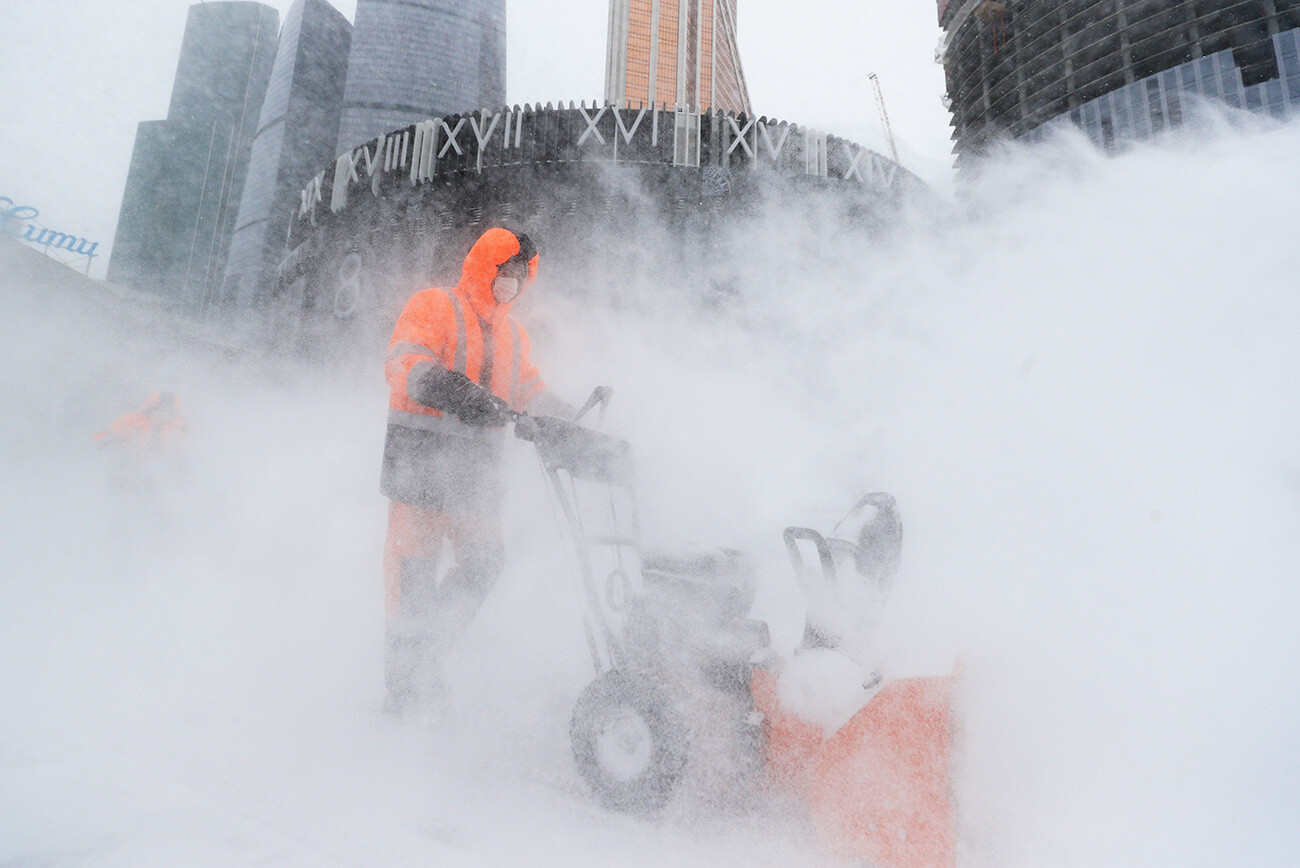
Fighting with snow in front of the Moscow City business center
Anton Denisov/SputnikDear readers,
Our website and social media accounts are under threat of being restricted or banned, due to the current circumstances. So, to keep up with our latest content, simply do the following:
If using any of Russia Beyond's content, partly or in full, always provide an active hyperlink to the original material.
Subscribe
to our newsletter!
Get the week's best stories straight to your inbox